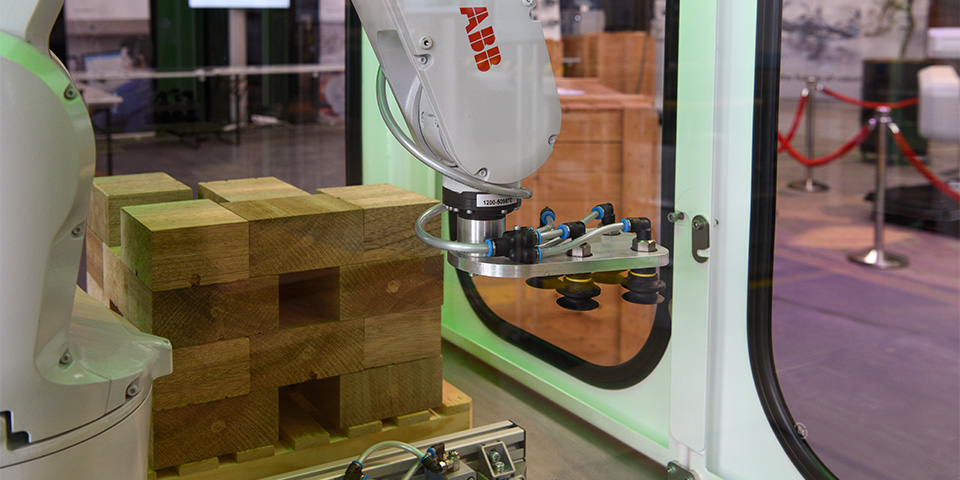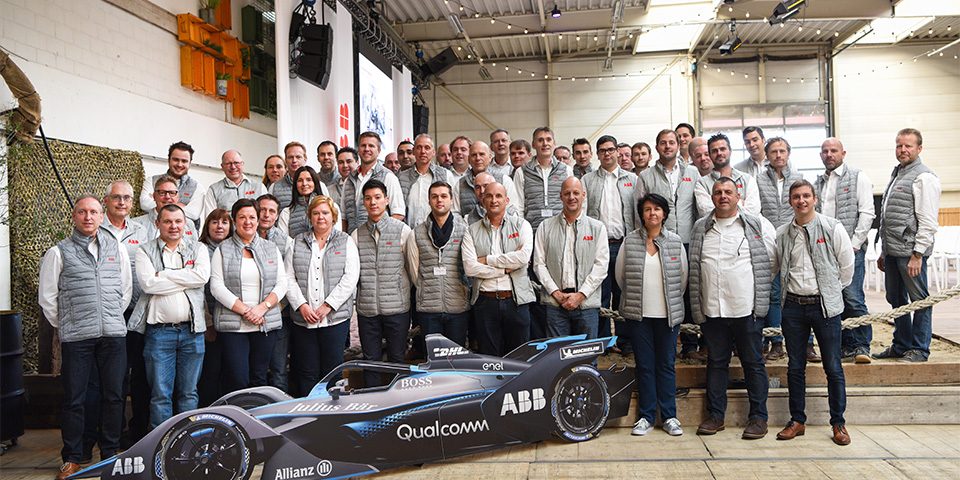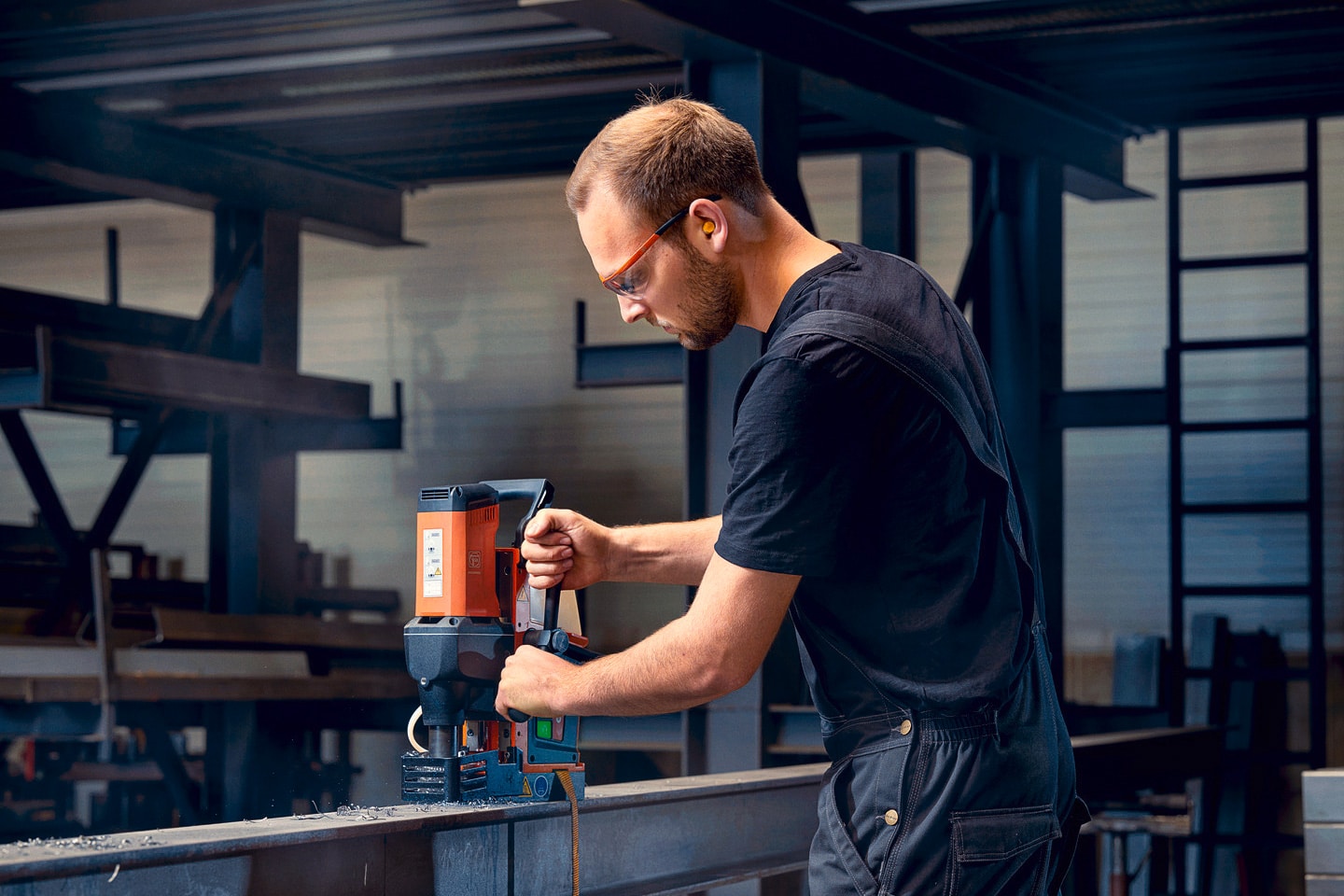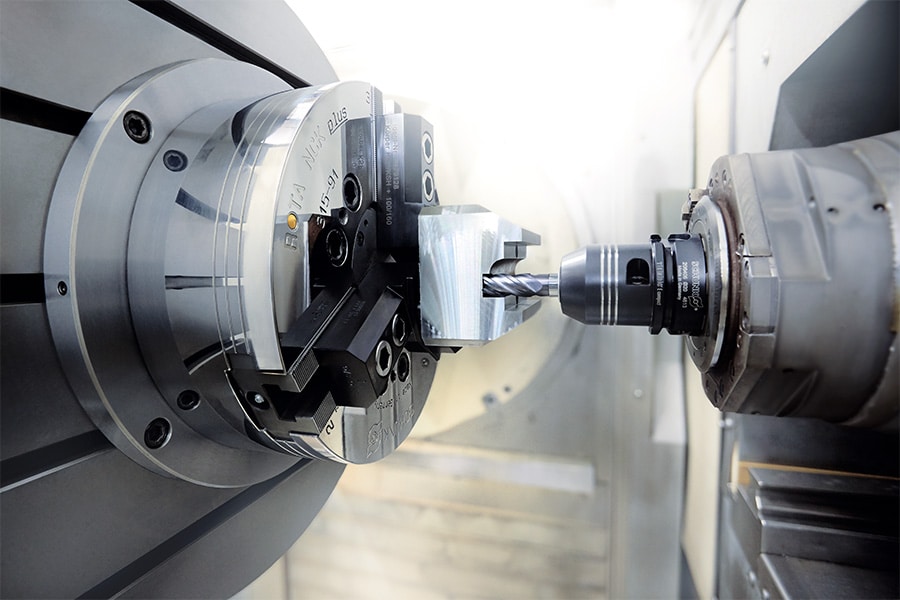
The future of robots: simple, collaborative and digital
Knowledge and automation are key to anchoring manufacturing in Western Europe. Robots (and cobots) are an integral part of that story. However, they will then have to evolve with it to deliver on that promise. Simple, collaborative and digital, that is the future ABB wants to build together with its partners and customers. A future that one could already glimpse during the past customer days in Breda.

Scenes from at ABB's past customer days.
Yes, robots are still doing well. True, the downturn in the automotive industry where they are working by the thousands along the production line has stalled their advance somewhat. But that will only prove temporary. Kris Huyck, general manager ABB Robotics: "In recent years, robot numbers have been going solidly in crescendo, with 2018 as a provisional milestone. That's when the 400,000 robot sales mark was rounded. This year will see a decline for the first time, although the IFR holds it at a stagnation. But the negative tenor will certainly not be seen on all banks. Sectors such as the food industry, healthcare and waste management are actually just now beginning to see the usefulness of robots in their processes. They are just now investing more than before. These new areas will usher in another period of growth starting in 2020. The IFR expects us to be around 584,000 by 2022."
New kind of robot
The new wave of automation that is coming will look very different from what manufacturing companies have been used to until now. Huyck: "The new consumer behavior is no longer consistent with our current way of producing. We are all evolving away from mass production towards individualized products. In the process, unwieldy production lines are being exchanged for flexible, integrated production islands that can, above all, switch quickly between products." And that also calls for a new kind of robot. The textbook example of this will soon be on display at ABB's new production site in Shanghai, China. There, the robots of tomorrow will build the robots of the day after tomorrow. But what will they be like? ABB sums it up in three words: simple, collaborative and digital.
Simple
For SMEs, the lack of a robot programmer is the biggest barrier to hiring robots. The easier robots can learn their tasks, the greater their potential will become. A first important step in this direction is standardization. If all components speak the same language, it becomes a lot easier to get them to talk to each other. In addition, the programming itself should become less complex. An example of the programming of the future is Google Blockly. In it, long, complicated code is replaced by a graphical programming language that users can find their way around intuitively. ABB is also adding its own service to simplify users' lives: function packages, OEM solutions and even fully engineered solutions. Only then have robots really become plug-and-play.
Collaborative
Anyone who says collaborative immediately thinks of cobots. Within ABB, this one is called YuMi, at its launch in 2015 a disruptive leap forward. Today there are already several variants. The latest, the Single Arm YuMi makes boarding easier than ever for the less complex issues. But collaborative can be realized just as well with classic robots. With the advent of safety concepts such as SafeMove, operators can work a lot closer to robots, in complete safety and with the advantage of higher production speeds outside this perimeter.
Digital
Everything is becoming digital. ABB has already done its first homework in this regard. With the Connected Services of ABB Ability, a whole host of functionalities are being added to make the life of maintenance managers a lot easier. There are currently 400,000 robots in the field, 50,000 of which can be connected, and 9,000 have already been connected. The benefits are already showing: 60% of service calls have been eliminated and a quarter fewer incidents occurred. This is done through remote access and monitoring. The more ABB knows, the better it can support its customers to detect faults, switch to predictive maintenance ... Cooperation with customers is central to this. Because the future of robotics is first and foremost a story of cooperation.




